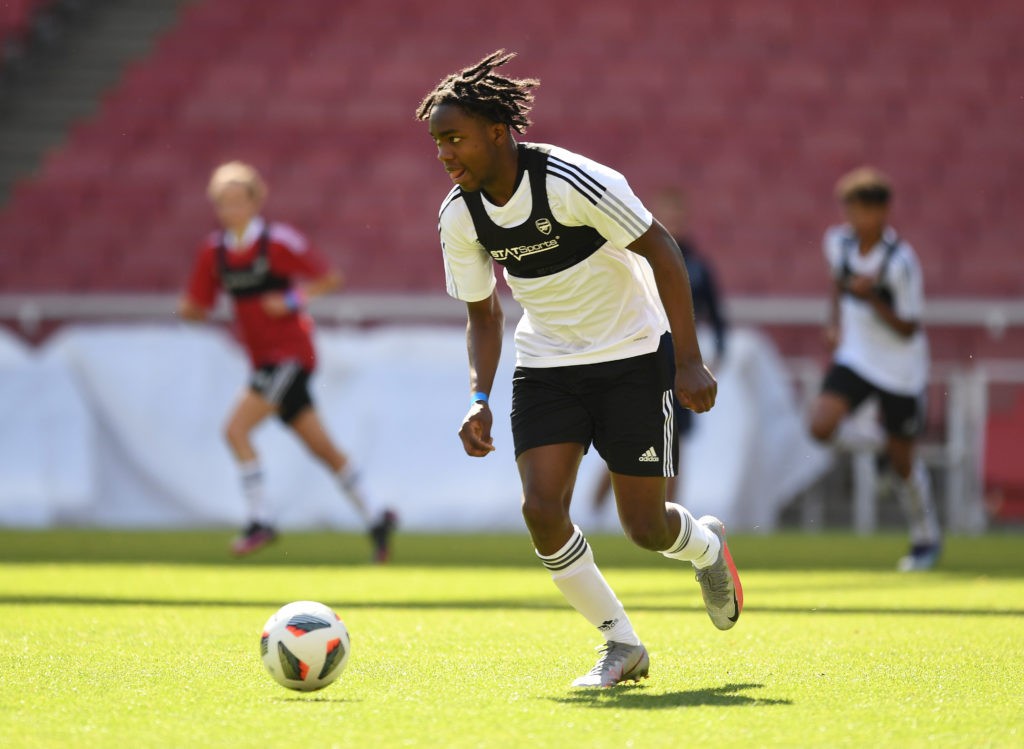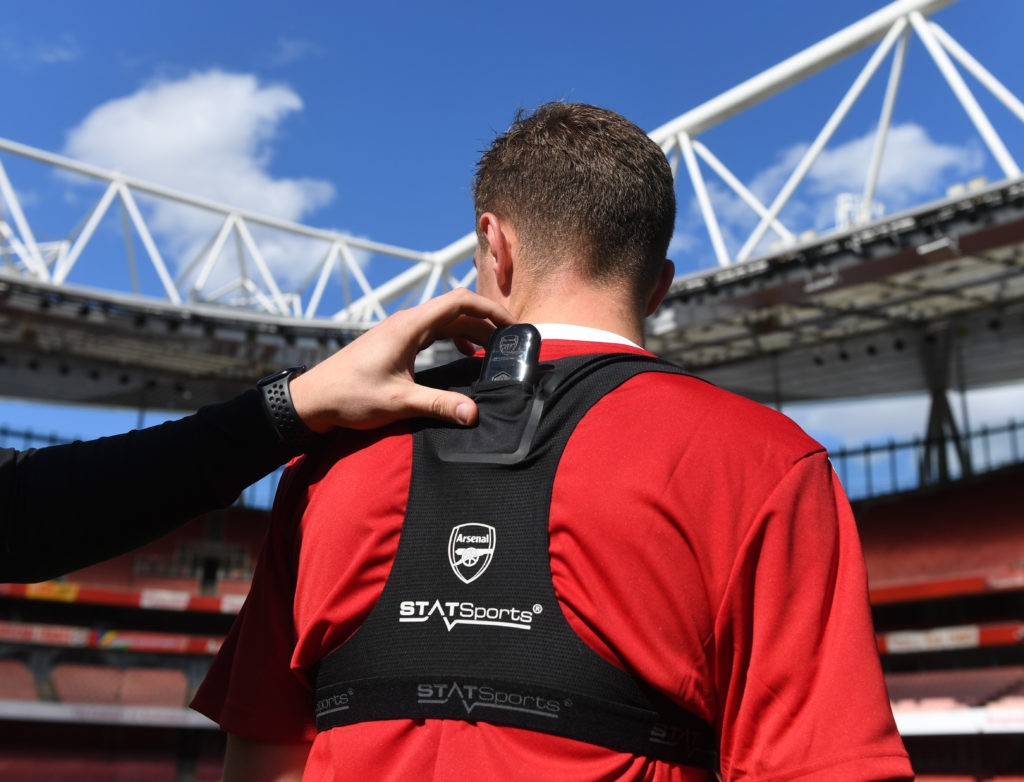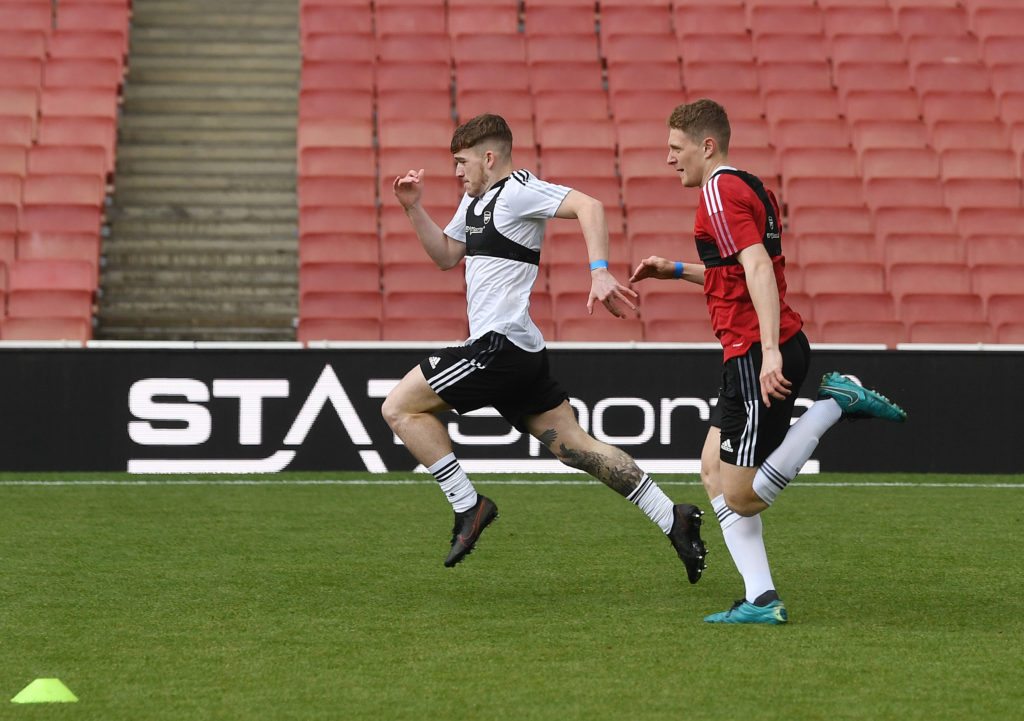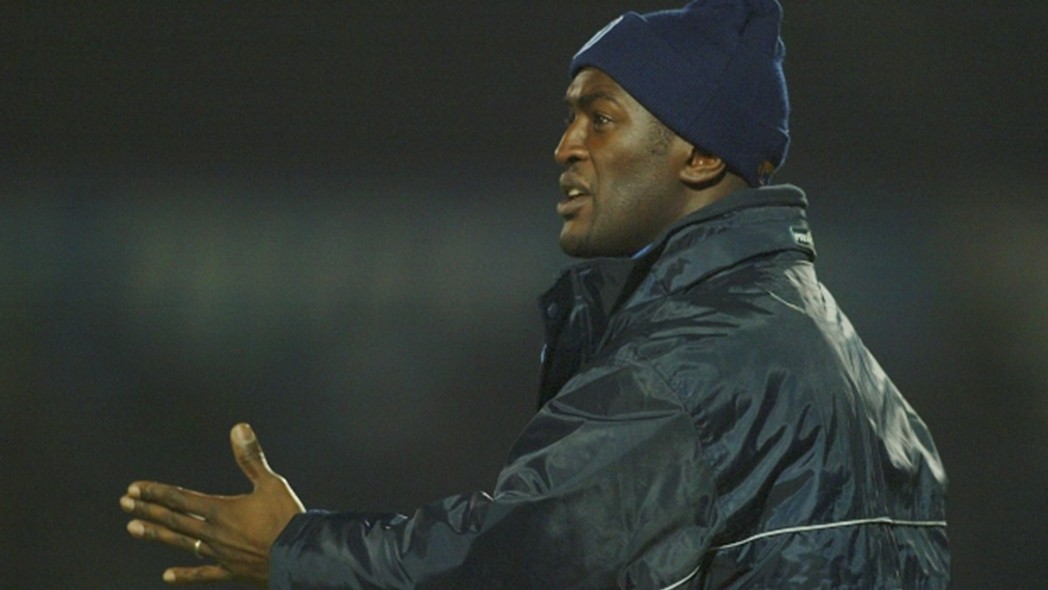Arsenal’s Lead Talent ID Coordinator Steve Brown has revealed how the club use data to help them find the next generation of talent.

At an event at the Emirates Stadium last week, a group of aspiring young footballers from around the world were invited to take part in a training session out on the pitch.
These players were youngsters who had used STATSports’ GPS tracker to monitor their physical stats in training with their local sides, before being selected by Arsenal for putting up particularly impressive numbers.
Before the training session, Daily Cannon had the chance to chat with Steve Brown, a Lead Talent ID Coordinator at Arsenal, who first explained what a normal pathway looks like for a youth player at the club.
“A typical pathway would be they’d start in the pre-academy at six or seven, but you can’t sign them until they’re under-8 – the year where they turn nine from September 1st,” Brown explained.
“So (until then) they’re allowed to go around and get this free coaching, whether it be Arsenal, Chelsea, Tottenham, Fulham, they can go around. And what you find is those young ones get a lot of good coaching.
“Then, when it gets to that under-8 year, now you’re trying to sign them. One thing I learned coming to Arsenal is the biggest fight in London is signing the under-8s.
“You see most of the [top clubs], even Chelsea, where they talk about the good groups at 15s/16s, a lot of them have been there since they were under-8. And it’s the same here.
“So you try and get that group right and some will drop in and some will drop off and then you just add to that.
“When you get to 16, then we offer scholarships to those who then go across to London Colney and then complete their scholarship and turn pro and then from there… 23s and offer they go, really.
Yet it’s not always like that. Offering hope to the youngsters in attendance at last week’s event, as well as to other young players still waiting for their big break, Brown recalled a story of a less typical pathway for a current academy youngster.
“At any point, anyone can come into the pathway and we found a kid in grassroots,” Brown revealed.
“At 16, it’s really hard, because they’ve probably been out of the system for so long, that to find a kid from grassroots at 16 is pretty rare. It happens, but it doesn’t happen a lot.
“We got a kid this year, his name is Maldini Kacurri. He came in and his first game at 16s was against Chelsea so it was a great test for him. And he thrived, and he’s thrived ever since he’s come in and he got offered a scholarship.
“He’d only been in the building less than three months but earned himself a scholarship.
“So different people with different assets or journeys, the journey is never straight, it’s never linear, people can come into the pathway at any time.”

“One thing I’ve found being at Arsenal and being around London is the grassroots football itself is an academy. So we’re probably picking out of the best pool of players in the country, being in London, you’ve just got to go and find them.
“You’ve got to be creative, you can’t keep looking in the same spots, you’ve got to go and mix with different communities, you’ve got to go and face all those challenges that are out there.
“On Saturday [21st May], we opened a massive South Asian project, at Hale End. In football we feel that South Asian people are underrepresented, that’s not just in players, that’s actually in practitioners as well.
“So there’s a big event on in Hale End and something we’re going to be going forward with for the foreseeable future and just make football accessible to that sort of community.
“It may become another talent pool and players come out of it, but if it doesn’t, we might get practitioners out of it.
“You know about Arsenal For Everyone, this is another part of it, this is another arm but also with the Talent ID and the academy involved.
“Being in a melting pot of different cultures and communities like London, you’ve got to go and get into all of them. You’ve got to go and make it accessible to all of them.
“And here at Arsenal, that’s what we’re working to do, whether it be in the academy or right across the commercial side of the club.”

It’s not just at Arsenal events and trials that the club are keeping an eye out, of course, but Brown reveals they had to get creative to keep scouting new talent during the early days of the pandemic.
“Covid was challenging for football, but from a Talent ID perspective, it was really challenging,” Brown said. “Because of the government guidelines, we couldn’t get the development centres up and running.
“So when we were scouting some lads off grassroots, they were coming straight off the grassroots pitches around London into the academy setting, which is a big step.
“But what we found was that some of them actually thrived on that, some of them came straight in, we signed them, and they’re off and running.
“From a Talent ID perspective, we really had to work creatively, when Covid came. There was a time when Lee (Herron) said ‘come on, get your coats on, let’s go and look around the local parks’.
“And we invited lads in from just walking around local parks, there was nothing else to do really, sitting indoors on Microsoft Teams and that.
“When difficult times like that come you’ve got to be creative and the creative ones are the ones who come through that.
“It is pretty much getting back to normal but from a trialist process, now that we’re back to normal they’ll come in from grassroots to our development centres giving them time to get up to speed with our coaching, and those ones that are thriving in matches will then come into the academy.
“So there’s a filter there now.”

This STATSports event centred around GPS data, and Brown explains how technology plays a part in their scouting system.
“I think data gives you an opportunity to create a dataset, where you can look at players from the same position, looking at key aspects of those positional profiles – so you’re judging like by like.
“It’s not the answer to everything, but it certainly helps in the decision-making. If we’ve got a player internally, we can assess against external players who we watch on videos and stuff like that.
“In the academy, we’ve got the ‘4 pillars’, which are Effective Team Player, Efficient Mover, Lifelong Learner, and Champion Mentality.
“The mentality stuff we look at when people show desire despite the score in the game, despite the conditions, despite the pitch…someone who might not be successful playing against someone who’s stronger than them but they’ve still got that determination from a champion mentality.
“We look at different criteria within those pillars to ascertain whether we should sign them or whether they have the right sort of indicators to be a strong young gunner.
“It’s a challenging environment here and to play in the Premier League, it’s not an easy road. So you’ve got to give them successes, they’ve got to experience failures, and they’ve got to experience tough times.”
There’s often a debate about the importance of data versus the ‘eye test’, but Brown argues you can use them both together.
“You can look at the data, especially data like Hudl and Sportscode, you can import data into the video, and then you can actually see it.
“So for every stat, there’s an action, you can look into that clip and see how that clip played out. So a dataset is matched with a bit of video where you know what that looks like.”

On this occasion, the stats were being used to judge individuals, but Daily Cannon asked Brown whether they could also use this kind of data to judge a coach’s work with their players.
“I think having worked with Dan Micciche with England and MK Dons, the coaches definitely looked for certain aspects – you know, at the FA they wanted a (certain) percentage of the ball rolling, the ball speed, and stuff like that,” Brown answered.
“They look for a lot of things like that. But it’s also, especially when you look at modern coaches who have a set way of playing, they’ll have stats to support that and they’ll have data, they’ll look at their win percentage versus their loss percentage in those areas across those key data points to know whether they’ve played well, or did they get into those key areas that they needed to.
“When I look at the stats, you know I went to the game at the weekend where Wycombe, my old club, played Sunderland.
“When I looked at the stats the stats looked stronger towards Wycombe, but I was thinking “well, no”. It didn’t look like that from the game that I saw.
“It’s like when people talk about full-backs, you look at crosses, but where are they crossing from? And if your full-backs are a big aspect of your team, how many times did that full-back go into the attacking third and then cross.
“There are certain things that link to your performance. Crosses in isolation, it could be crosses from just over the halfway line into the box, but is it an effective place to cross from?
“When they put data generically out there, I think it can be misleading, but, like the analysts do here and most clubs, when you start drilling down into the data in more detail around the datasets, it becomes more conclusive.”

Brown also spent time working at the FA in a similar role, but he explains that the differences between working that kind of role for a club versus a national team are significant.
“I think what I quickly understood at the FA was the clubs develop the players.
“The national team didn’t develop the players, it selected the players. So actually what you had was the best players in every position. The best players at that time, in the country in their best positions.
“And actually, that’s a dream for a coach. That’s what every coach wants.
“Even the games they play against the best from the other countries, because it’s an international programme, that’s when datasets really become important.
“The analyst guys at the FA used to pull so much data down that it worked, if you look at the data, they would find chinks in team’s armours.
“When the boys won the World Cup, the analysts were very much part of the team, as well as set-play coaches, and all that sort of stuff, it was a team effort. But that success was definitely supported by heaps of data.”
The progress of the England youth system during Brown’s time with the FA didn’t go unnoticed for long, particularly during the period of those youth World Cup successes.
“I remember being in Chile in 2015, when it was the u17 World Cup, and a lot of the German scouts were out there – when I was part of the recruitment team at the FA,” Brown recalls.
“They were there to spot the English boys because they knew with what was going on that England were going to start to develop players. Players were going to start to come through.
“And then you look at that squad, Phil Foden, Jadon Sancho, look at them now, but the Germans foresaw that.
“Jadon ends up going to Germany and there’s loads of English players now brought into the German game, getting that game time and coming back.
“The German league is one that develops youngsters, youngsters get put in there early. Dortmund are well renowned for it, I know the chief scout in England here who recruits for Dortmund. They’re big on that.
“So it’s a great development league for our players and hopefully they come back to the Premier League and become the players that they deservedly should be.
“Huge amounts of talent in England, huge amounts, loads of undiscovered talent. That’s one thing that’s clear for me, working here at Arsenal.”

Brown is well aware that not all young players reach their potential at once, and he says Arsenal ensure each individual undertakes a programme tailored to them.
“Talent ID is very much like an apple tree where they can all blossom at the same time but the fruit never drops at the same time.
“Different players come good, they have dips, they have streaks where they really kick on, and we stretch them.
“So those who are playing well in their age group, they get stretched and probably play in the next age group up. If they’re that good, they probably play in the next two age groups up. We do have lads in the academy who are currently doing that.
“So each player works within their age group but they’ve got their own development areas where they’re working on to improve.
“Some people have physical, some people have technical, some people have tactical stuff but they’re all working on different things at different times.
“At any time when we feel they’re good enough to be pushed on, they get pushed on, we don’t wait for the group, the best ones get pushed on. It’s about stretching them individually all the time.
“There are late developers, or those who are physically younger than their actual age. We play those down in the year younger and probably just wait for those ones.
“If they’re really technically good, it’s wrong to put them out of their depth and give them constant challenges where they physically can’t cope with it. So the right thing to do is play them down, and that’s what we do.
“I think the experience and the development plan here for the boys is one of the best that I’ve seen.
“I was an auditor for [Double Pass], I’ve gone across a lot of the Cat-1s, been involved in all their reports when it first rolled out in 2012.
“A lot of those programmes have moved on since, but actually, seeing where they were in their idea of development and what they were looking for in players, I think that gives us a bit of an edge.”
To find out more about the STATSports Arsenal FC Edition, visit www.statsports.com/arsenal

